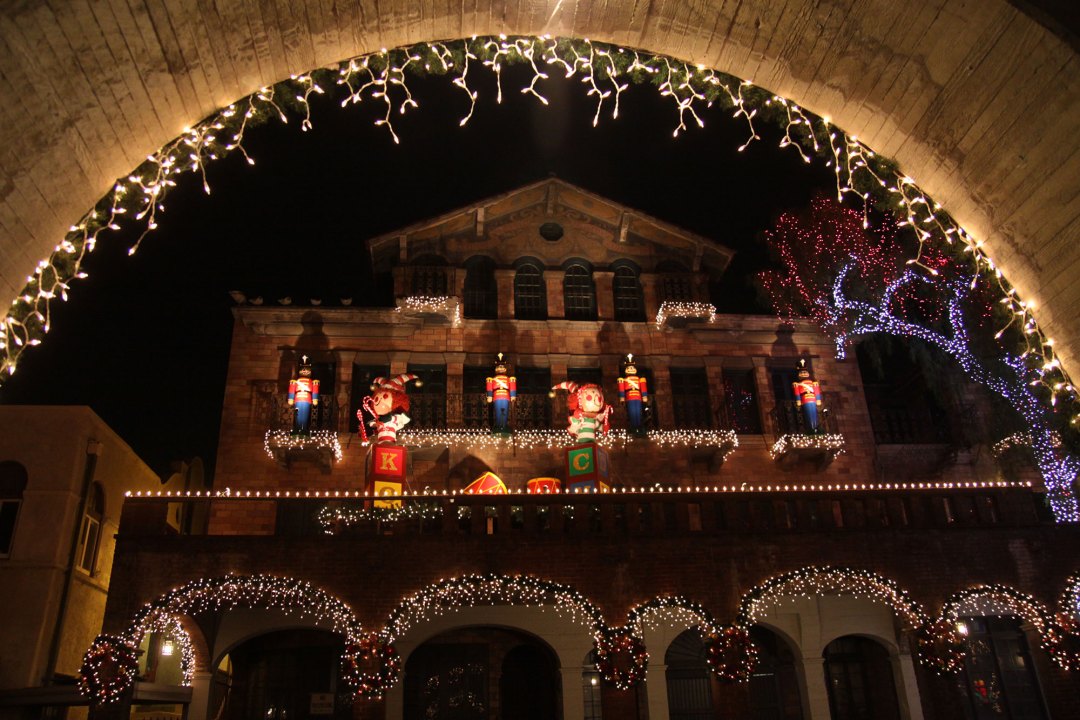On Sunday, Dec. 13, 1925, a cold wind from the north buffeted an estimated 2,000 people who climbed atop Mount Rubidoux. Led by Professor Arthur Bostick, the vast group, positioned near the newly raised peace tower, sang in unison a patriotic song and were filled with delight despite having trudged their way up the narrow mountain.
Dr. Theodore Hunt, a former pastor at the First Congregational Church in Riverside, recited an invocation, joined later by “Riverside’s notable dramatic soprano,” Miss Elsie Younggren, the church soloist who regularly performed during Easter services. It was a joyous day unlike any other – an occasion to honor Frank A. Miller.
“It is a wonderful, beautiful thing,” Miller said of the peace tower after his grandson Frank Miller Hutchings unveiled the grand structure. “It symbolizes the things we all believe in. I am grateful from the bottom of my heart.”
Born in a small suburb of Wisconsin in 1858, Miller was a leading member of the Riverside community. He made pronounced efforts to promote the city, notably as the founder and former chief developer of the Mission Inn (now Mission Inn Hotel & Spa) and was beloved by many for his earnest devotion to world peace. In a show of their gratitude, Riversiders dedicated to him the Peace Tower and Friendship Bridge that would be built on one of the city’s most historic mounts.
The idea started off simple. In 1925, while Miller was away on a six-month trip, the peace tower structure was to be completed before his return. Ross Hammond, a then-member of the Chamber of Commerce, the Committee of Fifty and other local organizations, chaired a newly created committee for the special project and the community was quick to react.
Arthur B. Benton, the architect who built the first two wings of the Glenwood Rooms at the Mission Inn, was selected by the committee to design the stone bridge that would go over Huntington Drive at the Mount Rubidoux summit. In addition to the bridge, Benton had proposed a stone tower near its upper end. The tower was to rise 28 feet above the bridge, 40 feet above the road and would be 10 feet in diameter. Designed as a peace tower, Benton proposed insignias of the allied nations from World War I were cut into a ring of sandstone near the top of the tower. Stones to build the bridge would be used from the mountain and Riverside Portland Cement Company had pledged to supply additional cement.
Benton’s proposal, sent to the committee in mid-July of 1925, was successful and project construction costs were ultimately funded by Riversiders and Miller’s friends from across the country. The largest single donation, however, came from the Riverside Japanese Association. Additionally, the organization helped beautify the base of the peace tower with shrubs and plants. For years following the monument’s dedication, the group tended the small garden in honor of Miller.
Construction of the widely endorsed project finally broke ground on August 7. Roads near the site were closed and a patrolman was stationed near the west side of Mount Rubidoux to enforce fifteen-minute control periods for the up and down traffic. Work on the tower was suspended the following month, however, so that a bell presented on behalf of the city by Riverside’s first mayor Samuel Evans could be hung. Before being moved to the tower, the bell originally was hung inside First Methodist Church in downtown Riverside. Once completed, the peace tower and bridge were admired by Riversiders alike.
That cold, windy night of Dec. 13 is remembered as a day of celebration for Miller and the thousands who honored him. Hammond gave introductory remarks followed by the recitation of an original poem by Francis Borton, a former curator of the Mission Inn. Other notable speakers at the ceremony included Father Francis Keating from St. Francis De Sales, Riverside’s oldest Catholic Church and Dr. David Starr Jordan, the founding president of Stanford University and one of the foremost advocates of world peace at the time.
“Mutual understanding and conciliation are slowly taking the place of blind hatred and still blinder greed,” Jordan said in his remarks.
To learn more about Frank A. Miller and his activities promoting world peace visit the “Toward Peace” exhibit presently at the Mission Inn Museum.









